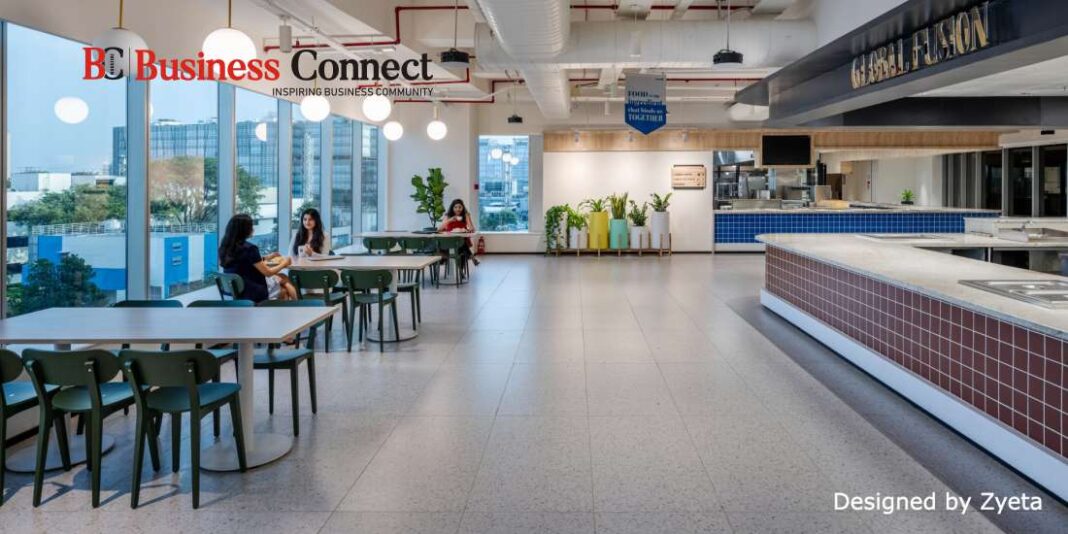Commute-Worthy Magnetic Offices that Inspire Choice and Connection
Is your workplace worth all the commuting effort?
With hybrid work now the norm, motivating employees to return to the office poses a challenge for organizations. The COVID-19 pandemic shifted the work culture to remote settings, offering people comfort and flexibility in their work style and schedule. Many are now favoring remote work, yet it brings challenges that affect productivity and hinder organizational growth.
How Does Remote Working Impact Employees?
Technology has made remote work more accessible, facilitating seamless communication through messaging and video conferencing tools for effective team coordination. The focus on employee productivity has shifted from screen time to actual output, granting flexibility in work schedules. Remote work offers savings in time, money, and commuting energy, presenting an attractive option.
However, despite regular virtual meetings, remote work can lead to feelings of isolation, diminishing the essence of engagement and collaboration found in physical workplaces. The absence of vibrant office dynamics impacts employees’ morale and emotional support, affecting their well-being and job satisfaction. While hybrid work models aim to address this by mandating office days, many employees are not motivated to return due to workplaces not adapting to evolving preferences.
This impacts the overall health and well-being of employees, making work redundant for them. While the hybrid working module has helped address this issue by mandating employees to work from the office on specific days, people are not really driven to go back to their workplace. This is primarily because the offices have not yet acknowledged and adapted to the evolved workplace preferences of people.
Why Work from the Office, Anyway?
54% of hybrid workers would think about changing jobs if required to return to the office full-time, according to a report by Hubspot. This alarming statistic indicates that people prefer remote working over their workspace. However, it is vital for organizations to tilt this compass in favor of working from the office. Here’s why:
Research by McKinsey states, that when employees spend at least 50% of their working time in person together, it significantly improves mentorship, collaboration, and trust between teams. It also enhances the overall employee performance and retention.
The numbers above, establish that working from the office is the module that will fetch you results in the long run. Organizational growth can only be achieved when a workforce is aligned with the company’s vision and goals.
How to Make Offices the Preferred Destination for Work?
Enticing people back to offices requires a thorough understanding of their needs, challenges, and aspirations. Therefore, it is vital for organizations to conduct surveys and recognize the wants of their workforce. Once that is achieved, mentioned below are the key design interventions that companies must undertake to position offices as the “it” destination for work.
Curated for Collaboration
A fundamental reason why people would want to return to offices is for socializing, collaboration, and team bonding. People need support, interaction, and engagement to feel centered and lively. Therefore, making space for informal areas such as cafeterias, lounges, indoor gaming rooms, and co-working desks can provide employees with the opportunity to bond with each other. Further, incorporating breakout zones such as terraces, courtyards, and atriums can allow people to take a quick respite from work and connect with one another.
Designing for Comfort
Prioritizing employee convenience and comfort mandates organizations to invest in adjustable workstations and comfortable seating. It helps avoid joint pain, sore muscles, and body ache issues that usually occur due to prolonged hours of sitting. Ergonomic furniture enhances the overall well-being of the workforce, improving their focus on work. Incorporating natural light and ventilation enables the creation of a pleasant atmosphere that lets people feel at ease, just like they might feel at home.
Geared for Flexibility
Organizations must embrace a flexible office layout that accommodates diverse work styles and preferences. They can implement adaptable furniture and modular designs that can be easily reconfigured to support various activities. More so, companies can incorporate flexible desk scheduling options and remote work policies to cater to the needs of a diverse workforce. This allows employees to choose when and where they work most effectively; thereby letting them enjoy the same freedom that they get while working from home.
Crafted for Focus Work
While collaboration is vital, recognizing the importance of focused, individual work is equally essential for workplaces. Therefore, organizations can create designated quiet zones, private offices, work pods, or soundproof workstations to provide employees with spaces conducive to concentration and uninterrupted productivity. This can aid in striking a balance between open-plan collaborative areas and quiet zones to cater to different work requirements. It lets employees choose their work environment and produce results in a space that best suits their way of work.
Promoting the Company Ethos
Organizations can embed the company’s ethos into the physical environment to strengthen employee connection to the organization. This can be achieved by incorporating branding elements, company values, and mission statements into the office design. They can showcase achievements and milestones through visual displays to instill a sense of pride and belonging among employees, aligning the physical space with the company’s identity. This can foster a sense of belongingness among employees, ensuring their dedication to their jobs, their teams, and the organization, as a whole.
In Conclusion
Designing offices that prioritize employee well-being and productivity is more than just aesthetics—it’s a strategic investment. To achieve commute-friendly workplaces, organizations need a comprehensive approach.
In addition to design strategies, providing flexible work hours or staggered start times can ease rush-hour stress, making commuting easier. Hosting engaging events fosters a positive office atmosphere, encouraging employees to embrace the workplace community.
Integrating these strategies transforms the daily commute from a mere necessity into an enriching aspect of the overall work experience, adding value to the office environment.


